
Virgin Galactic's SpaceShipTwo was
destroyed during a powered test flight today in Mojave, CA. This was the fourth powered test flight of SpaceShipTwo. There were two pilots on board the craft. Local law enforcement agencies have confirmed that one of the pilots was killed during the accident and the other was able to parachute from the craft, but was injured and had to be flown to a nearby hospital.
This test flight
was the first for a new kind of fuel-a plastic similar to nylon. Previously, SpaceShipTwo had used a synthetic rubber fuel, one that had been giving engineers trouble for years as they tried to scale up the successful 3-seat SpaceShipOne prototype, which won the X Prize in 2004, to a much bigger vehicle using the same hybrid rocket design and fuel, and meant to carry tourists to suborbital space.
We're left to wonder what impact the accident will have on the nascent commercial spaceflight industry, which Branson has been working hard to characterize as safe. Friday's crash is a stark reminder that spaceflight is an inherently risky endeavor.
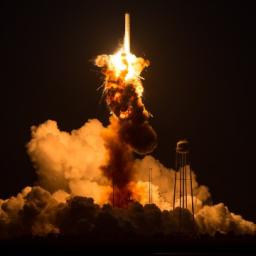
An unmanned NASA-contracted rocket exploded early Tuesday evening along the eastern Virginia coast,
causing a huge fireball. Video shows the rocket rising into the air for a few seconds before an explosion. It then plummets back to Earth, causing more flames as it hits the ground. NASA tweeted that the failure occurred six seconds after launch. Afterward, the launch director said on NASA's feed that all personnel were accounted for and that no injuries were reported.
According to NASA, the Orbital Sciences Corp.'s Antares rocket and Cygnus cargo spacecraft were set to launch at 6:22 p.m. ET from the Wallops Flight Facility along the Atlantic Ocean. It was set to carry some 5,000 pounds of supplies and experiments to the International Space Station. Since the end of NASA's space shuttle program, it has relied on private companies -- specifically Orbital Sciences and SpaceX -- to bring materials to the space station, albeit using NASA facilities for launch. Tuesday's launch was supposed to be the fourth flight for Orbital until it ended, as the company acknowledged in a statement, in "catastrophic failure." Marking
the first accident since NASA turned to private operators to deliver cargo to the International Space Station.
Does the worsening galactic cosmic radiation environment observed by CRaTER preclude future manned deep-space exploration? That is the conclusion of of a recently published paper that posits
the recent decrease in solar activity has led to increased incidence of cosmic rays, which are dangerously radioactive. That may just put a damper on anyone interested in organizing manned exploration of the Red Planet.
The Sun and its solar wind are currently exhibiting extremely low densities and magnetic field strengths, representing states that have never been observed during the space age. The highly abnormal solar activity between cycles 23 and 24 has caused the longest solar minimum in over 80 years and continues into the unusually small solar maximum of cycle 24. As a result of the remarkably weak solar activity, we have also observed the highest fluxes of galactic cosmic rays in the space age, and relatively small solar energetic particle events. We use observations from the Cosmic Ray Telescope for the Effects of Radiation (CRaTER) on the Lunar Reconnaissance Orbiter (LRO) to examine the implications of these highly unusual solar conditions for human space exploration. We show that while these conditions are not a show-stopper for long duration missions (e.g., to the Moon, an asteroid, or Mars), galactic cosmic ray radiation remains a significant and worsening factor that limits mission durations.
Very interesting and at least for me counter intuitive. I would have thought: Less solar activity means less radiation. But it seems that the solar wind normally has the effect of reducing the amount of dangerous cosmic radiation that can reach the inner solar system. But to that, point, the article points out:
While particles and radiation from the Sun are dangerous to astronauts, cosmic rays are even worse, so the effect of a solar calm is to make space even more radioactive than it already is.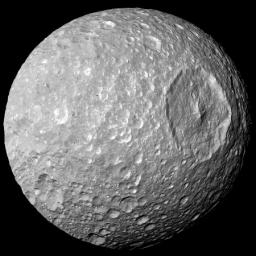
Mimas, one of Saturn's smaller satellites, may seem a little dull... An icy moon that's just 246 miles wide and whose most distinctive feature is the 88-mile-wide Herschel crater - a giant Cyclops-like indentation that makes the moon resemble the planet-obliterating superweapon from "Star Wars" that's known as the Death Star. But the moon
may hold a special secret of its own. A stronger than expected rotational wobble points to one of two intriguing scenarios: Mimas either has an irregularly shaped core or has an ocean buried underneath its icy surface. "Something else has to be going on inside." The findings, described in the journal Science, shed new light on a mysterious but often-overlooked moon that could hold clues to its early formation.
Other scientists say it's unlikely Mimas has such an interesting interior and think
the wobble can be explained more simply. One problem is that Mimas's ancient, heavily cratered surface shows no signs that water has ever touched it-unlike, say, the freshly Zamboni-ed ice skating rink of Europa. That same result could be achieved with irregular gradations in the density of rock, ice, and pore space. The detected wobble could also have been knocked into existence by something that has nothing to do with the moon's interior: a comet impact.
Completing its third voyage into space (22 months since it left in December 2012), the X-37B is a known space plane with a secret purpose. The U.S. Air Force's fact sheet lists the official purpose of the craft as "reusable spacecraft technologies for America's future in space and operating experiments which can be returned to, and examined, on Earth." Speculation abounds that there's an intelligence purpose to the missions, but the secrecy around the program means whatever the X-37B does besides test orbital re-entry will remain secret for some time.
Built by Boeing's secretive Phantom Works in Huntington Beach, Calif., the Air Force X-37B spacecraft is rumored to be everything from a space bomber to a satellite-killer or a test-bed for advanced spy satellite sensors. But as the news media fails to contain their excitement at the opportunity to wildly speculate,
experts have debunked the rumors repeatedly, over the years."To the extent that it does have a purpose, I think its purpose is to keep the Chinese guessing as to what the purpose is," said John Pike, director of GlobalSecurity.org, a leading source of defense, space and intelligence information. "Over time, most of the money got spent just to keep the program going."
When completed in 2022, the mammoth Thirty Meter Telescope will have eight times the light-gathering area of any other optical telescope.
But many Hawaiians are opposed to it.
The ceremony demonstrated the combustible mix of science, local traditions, and politics that have dogged the summit's development for decades and the TMT project in particular. The ceremony was interrupted for several hours as local opponents staged a peaceful protest[3], using their cars to block the road leading to the summit. Some held signs using TMT to spell out "Too Many Telescopes."
Mauna Kea, often translated as "White Mountain" because it's sometimes capped with snow, rises 13,796 feet (4,205 m) from the Pacific Ocean and is sacred to native Hawaiians. The dormant volcano is known locally as wao akua ("realm of the gods"), and its slopes are dotted with shrines, altars, and hidden burial grounds.
According to the master plan drawn up in 1983 (extended in 2000) between state environmental officials and the University of Hawaii, which manages the summit, no more than the 13 domes can be built on the summit. This limitation ultimately led to cancellation of plans to add four small "outrigger" telescopes to Keck Observatory's existing giant twin domes.
Despite the protests, construction for the TMT has been approved and will move forward. When completed, perhaps as early as 2022, the telescope will leapfrog to the top ranking of the world's largest optical telescopes.
Each of the 492 mirror segments that comprise the Thirty Meter Telescope's f/1 primary mirror will be constantly adjusted for optimum alignment. An 11-by-8-foot pickoff mirror protrudes through the central opening and directs light sideways to one of several planned instruments.
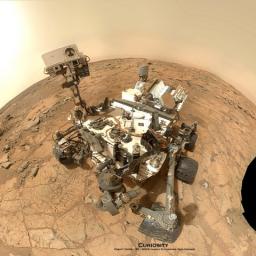
In the past decade, probes orbiting Mars and telescopes on Earth have detected what appeared to be plumes of methane gas from the Red Planet. The presence of colorless, odorless, flammable methane on Mars, the simplest organic molecule, helped revive the possibility of life once existing, or even currently living, just below the planet's surface. Scientists have suspected that methane stays stable in the Martian atmosphere for only about 300 years, so whatever is generating this gas did so recently.
A large-scale non-biological source of methane production on Mars might have been an even more exciting result. A renewable process humans might be able to adapt for use on Earth to meet our energy needs. But Curiosity has revealed no trace of methane on the Martian surface.
"Based on earlier observations, we were expecting to land on Mars and measure background levels of methane of at least several parts per billion, but saw nothing," Webster told Space.com.
"It's a mystery surrounded by an enigma here," said imaging physicist Jan-Peter Muller.
http://www.nbcnews.com/science/space/mars-mystery-deepens-curiosity-finds-no-sign-methane-f4B11202946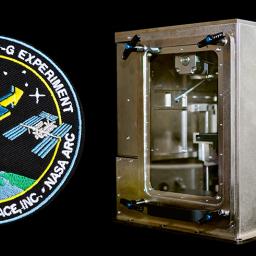
When
the first 3-D printer designed to work in a weightless environment is sent up to the International Space Station - as early as next week! - it will mark one small step toward a giant leap for manufacturing in outer space.
"Imagine if you're going to Mars, and instead of packing along 20,000 spare parts, you pack along a few kilograms of 'ink,'" NASA astronaut Reid Wiseman said in a video recorded in March before starting his stint on the station. "Now you don't even need to know what part is going to break. You can just print out that part. ... I really like that, and it'll be fun to play with that in orbit."
[Ed note: finally able to use the "printer" icon in a "space" article. Life is good.]
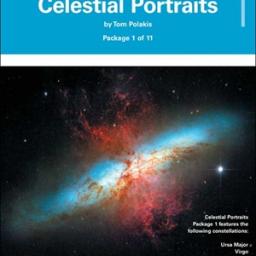 Astronomers have used a worldwide network of radio telescopes to resolve a controversy over the distance to a famous star cluster
Astronomers have used a worldwide network of radio telescopes to resolve a controversy over the distance to a famous star cluster - a controversy that posed a potential challenge to scientists' basic understanding of how stars form and evolve. The new work shows that the measurement made by a cosmic-mapping research satellite was wrong.
Until the 1990s, the consensus was that the Pleiades are about 430 light-years from Earth. However, the European satellite Hipparcos, launched in 1989 to precisely measure the positions and distances of thousands of stars, produced a distance measurement of only about 390 light-years. ... "That may not seem like a huge difference, but in order to fit the physical characteristics of the Pleiades stars, it challenged our general understanding of how stars form and evolve," said Carl Melis of the University of California, San Diego. "To fit the Hipparcos distance measurement, some astronomers even suggested that some type of new and unknown physics had to be at work in such young stars."
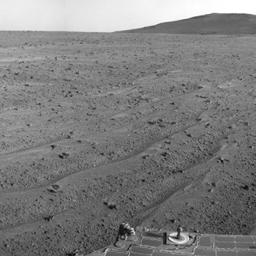
You think it's stressful to remotely reboot a server in a datacenter in another state? Talk to NASA, where
An increasing frequency of computer resets on NASA's Mars Exploration Rover Opportunity has prompted the rover team to make plans to reformat the rover's flash memory.
The resets, including a dozen this month, interfere with the rover's planned science activities, even though recovery from each incident is completed within a day or two. Flash memory retains data even when power is off. It is the type used for storing photos and songs on smart phones or digital cameras, among many other uses. Individual cells within a flash memory sector can wear out from repeated use. Reformatting clears the memory while identifying bad cells and flagging them to be avoided.
"Worn-out cells in the flash memory are the leading suspect in causing these resets," said John Callas of NASA's Jet Propulsion Laboratory, Pasadena, California, project manager for NASA's Mars Exploration Rover Project. "The flash reformatting is a low-risk process, as critical sequences and flight software are stored elsewhere in other non-volatile memory on the rover."
 Virgin Galactic's SpaceShipTwo was destroyed during a powered test flight today in Mojave, CA. This was the fourth powered test flight of SpaceShipTwo. There were two pilots on board the craft. Local law enforcement agencies have confirmed that one of the pilots was killed during the accident and the other was able to parachute from the craft, but was injured and had to be flown to a nearby hospital.
Virgin Galactic's SpaceShipTwo was destroyed during a powered test flight today in Mojave, CA. This was the fourth powered test flight of SpaceShipTwo. There were two pilots on board the craft. Local law enforcement agencies have confirmed that one of the pilots was killed during the accident and the other was able to parachute from the craft, but was injured and had to be flown to a nearby hospital.




